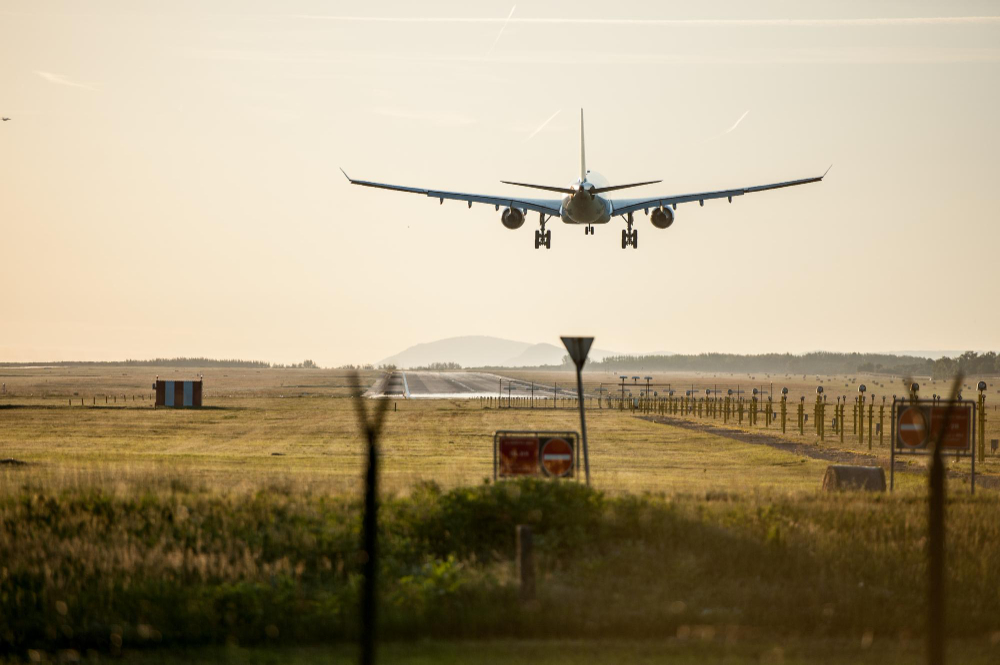Towered vs. Untowered Airports
Both types of airports rely on clear communication to for safety, but towered airports have a higher level of oversight due to ATC involvement.
Towered Airports
Towered and untowered airports differ primarily in how air traffic is managed, with towered airports offering a higher level of oversight.
At towered airports, an Air Traffic Control (ATC) tower actively manages aircraft movements both on the ground and in the surrounding airspace. These airports are typically associated with controlled airspace, such as Class B, C, or D. P
ilots operating at towered airports must establish two-way communication with ATC before entering the controlled airspace.

Untowered Airports
Pilots communicate directly with one another using a common traffic advisory frequency to announce their intentions and maintain safe separation.
While Flight Service Stations (FSS) can provide valuable support such as weather briefings and flight planning assistance, they do not manage air traffic at untowered airports the way ATC does at towered airports.

Air Traffic Control (ATC) at Towered Airports
ATC gives you clearances
Air Traffic Control (ATC)
ATC is responsible for managing the safe and efficient flow of air traffic in controlled airspace.
Controllers issue clearances, provide traffic separation, and offer critical instructions to pilots. ATC operates in specific locations like:
- Air Traffic Control Towers (Towers) at larger airports
- Approach and Departure Control for transitioning traffic
- En Route Centers for aircraft in cruise over long distances
At towered airports, pilots must maintain communication with ATC for takeoffs, landings, and taxi operations.
FSS (Flight Service Station)
FSS gives you guidance
When to use FSS
To communicate with a Flight Service Station (FSS), pilots use designated radio frequencies that are standardized across the U.S. The most commonly used frequency is 122.2 MHz, making it a go-to option for contacting FSS.
Flight Service Stations provide vital support to pilots, particularly in untowered environments. Unlike ATC towers which are located at designated airports, FSS locations are located throughout the country, often in regional offices.
When to use 122.2 MHz:
- Pre-flight assistance: For weather briefings, filing flight plans, or receiving other critical information.
- In-flight assistance: For updates on changing weather conditions, Notices to Air Missions (NOTAMs), or relaying position reports if ATC communication isn’t available.
3 Types of FSS Weather Briefings
FSS offers three types of weather briefings to help pilots plan safe flights:
- Standard Briefing: A full, detailed weather overview for pre-flight planning.
- Abbreviated Briefing: Provides a condensed version of the standard briefing, focusing on essential information for safe flight planning.
- Outlook Briefing: Provides forecasts beyond six hours, giving pilots a longer-term perspective on weather conditions.
**Note** On the Part 107 Exam, if asked to choose between “supplemental briefing” and “abbreviated briefing,” pick “abbreviated briefing.” The term “supplemental briefing” doesn’t exist and is intentionally misleading!
FSS Briefings vs. ATC Communication at Towered Airports
You can still get an FSS briefing for a flight at a towered airport, especially for pre-flight planning. FSS provides helpful information like weather updates and NOTAMs before you take off.
But once you’re at the towered airport, you’ll rely on ATC for real-time instructions like takeoff clearances, taxi routes, and air traffic control. FSS helps you plan your flight, and ATC handles things once you’re in the air and at the airport.



